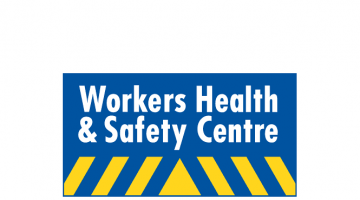Gender, work and health
Gender and sex play an important role in determining work experiences, as well as health experiences in the wake of a work-related injury or disease. (“Gender” typically refers to socially constructed roles, relationships, behaviours, relative power and other traits that societies ascribe to women, men and people of diverse gender identities. “Sex” is typically understood to refer to the biological and physiological characteristics that distinguish females from males.) IWH research seeks to understand these experiences—in particular the effects and outcomes of occupational exposures related to these experiences—in order to develop gender- and sex-sensitive policies and practices to improve the health of all working Canadians.
Featured

At Work article
Review synthesizes differences between men, women in injury risks and outcomes
Men and women may be part of the labour force in similar proportions, but many industries and occupations are still dominated by one sex/gender or another. A new systematic review at IWH looks at differences between men and women in work exposures and injury/illness outcomes.
Published: May 20, 2022
Journal article
Journal article
Association between dimensions of the psychosocial and physical work environment and latent smoking trajectories: a 16-year cohort study of the Canadian workforce
Published: Occupational and Environmental Medicine, October 2018

IWH in the media
Women in education sector at greater risk of workplace violence
Women working in Ontario’s education sector are four to six times more likely than their male counterparts to require time off work because of being physically assaulted on the job, reports the Canadian Occupational Safety.
Published: Canadian Occupational Safety, August 2018
News release
News release
Risk of workplace violence increasing among women in Ontario’s education sector
Published: August 2018

IWH in the media
Work-related stressors impact women and men differently, research finds
Exposure to psychosocial hazards at work adds to the growing health burden stress places upon both women and men, according to recently published Canadian research. Researchers from Institute for Work and Health found women reported lower job control, higher job strain (low job control combined with high job demands) and higher co-worker support compared with men. Women and men were found to have similar levels of job insecurity and supervisor support.
Published: Workers Health & Safety Centre, August 2018

Research Highlights
Gender differences in the link between psychosocial work exposures and stress
Women’s and men's stress levels are affected differently by psychosocial work exposures such as supervisor or co-worker support, job control, job demand and job insecurity.
Published: August 2018

At Work article
Sex/gender analysis: Links between psychosocial work factors and stress not always as expected
IWH study examines differences between men and women when it comes to the links between stress and psychosocial work factors such as supervisor support, job control and job security.
Published: August 2018

At Work article
Sex/gender analysis: Are risks of violence at work higher for men or women? It depends on type of violence
Men and women face similar risks of physical violence at work, but the risks of sexual violence at work are four times higher for women than for men.
Published: August 2018

At Work article
Sex/gender analysis: Men and women with arthritis have same needs at work, but not the same supports
Study of workers with arthritis finds the need for workplace supports goes unmet more often among women, and that's due to the type of jobs and workplaces women are in.
Published: August 2018

At Work article
Sex/gender analysis: Gender study finds overwork linked to higher risks of diabetes in women, not men
Working too long increases risks of diabetes—for women, not men—IWH and ICES study finds.
Published: August 2018
Journal article
Journal article
Psychosocial work factors and diabetes: what is known and what is left to know?
Published: Journal of Diabetes, Metabolic Disorders & Control, August 2018